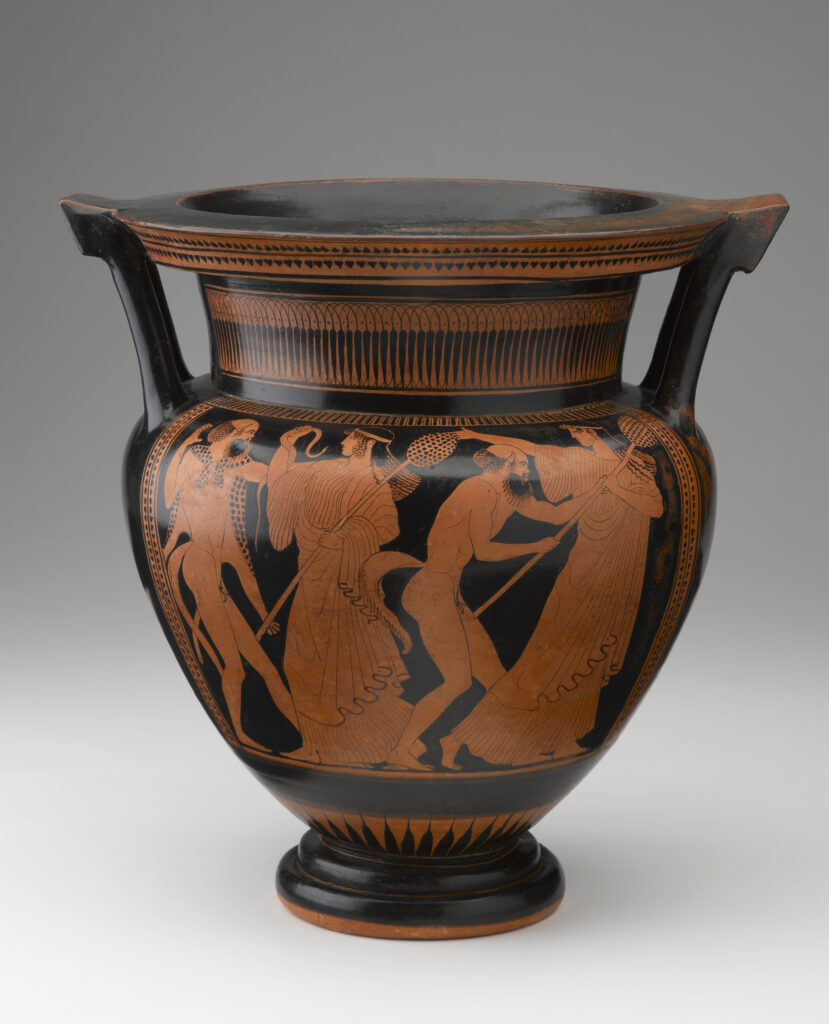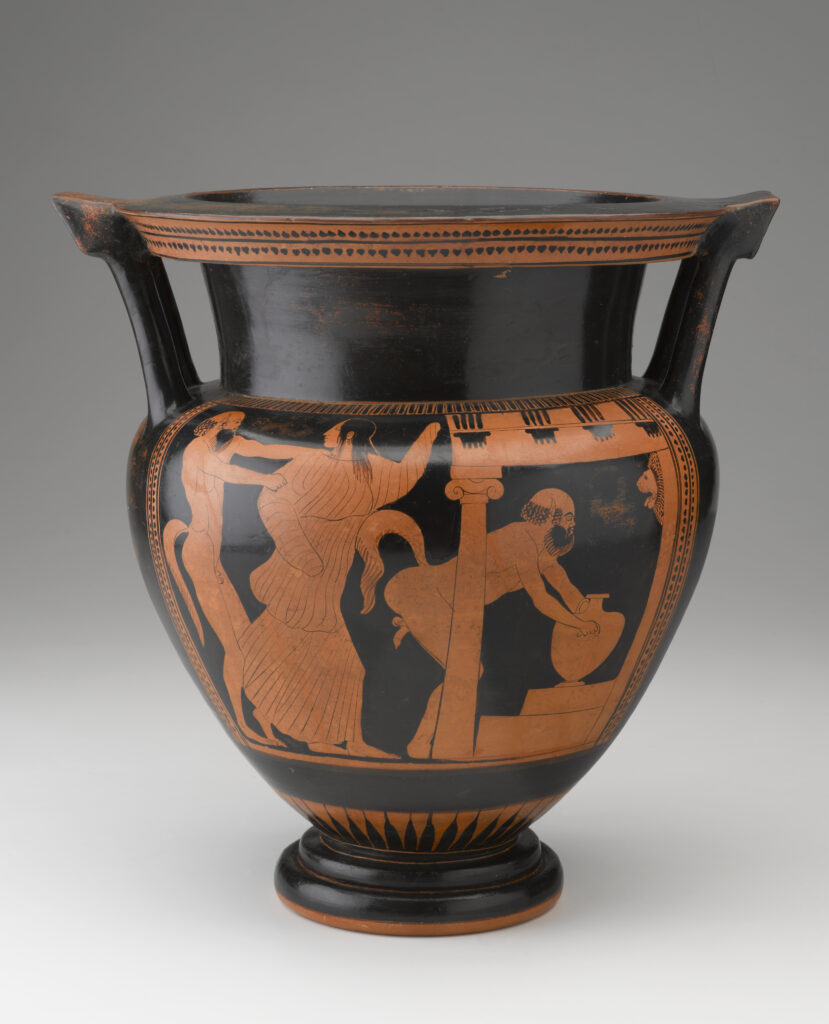Column Krater with Satyr and Maenads (work of art)
Artwork Info
About
Key Ideas
- A krater is a large, footed vessel that was used as a mixing bowl in ancient Greece. Kraters typically have a wide opening and two handles. A column krater has thick handles that are similar to the form of a column.
- Kraters were often used at a symposium, which is a social gathering of upper-class Greek males.
- This krater was decorated using the red-figure technique. Red-figure pottery features decorative scenes and figures that are red, with a black background.
- This krater is attributed to the Syriskos Painter, who was active in Athens at the end of the fifth century BCE. Attributing a work to an artist means that scholars are uncertain about the artist’s identity.
Learn More
Kraters were common vessels in ancient Greece. These large bowls were used for mixing water and wine. They came in different shapes, including column kraters (like Column Krater with Satyr and Maenads), volute kraters, and bell kraters. The name column krater refers to the vessel’s large, thick handles. Column kraters were first produced in the seventh century BCE. They were commonly made by Athenian potters in the sixth and fifth century BCE.
This krater was decorated using the red-figure pottery painting technique. This sixth-century technique gradually replaced the earlier black-figure technique. These two techniques are visual opposites. Black-figure vases have a red background, and red-figure vases have a black background. To make a red-figure vase, the pottery maker or painter first covered the vase’s surface with slip (liquified clay). Then they added details with small lines of glaze. The slip-covered areas of the vase turned black when fired in a kiln, and the uncovered areas turned red. To make a black-figure vase, the painter added decorative scenes using slip. Then they carved the details into the vase instead of painting them on with a brush. Both red-figure and black-figure pottery pieces were fired using a three-step process. In the first step, air was let into the kiln and the whole vase turned the color of the clay. In the next step, the oxygen in the kiln was reduced and the vase turned black in the smoke-filled kiln. In the final step, more oxygen was added to the kiln. The areas of the vase that were covered with slip remained black, and the uncovered areas turned red.
Black-figure kraters often featured scenes from Greek mythology. Red-figure kraters typically depicted scenes of symposia (plural of symposium). At the symposium, men of the elite class socialized, listened to music, and even recited poetry. The Greek symposium included a symposiarch, or master of ceremonies. This person was in charge of deciding how much water to mix into the wine in the krater. The wine may have been flavored with herbs, honey, or other ingredients. In addition to kraters, objects used at the symposium included cups, coolers, and jugs for storing and serving beverages. These objects were often decorated with scenes of parties or images of Dionysus (the Greek god of wine and theater) and his followers.
This krater is decorated with images of satyrs and maenads, who were followers of Dionysus. According to Greek mythology, satyrs were forest gods who were part human and part animal. They were often depicted with the face, torso, and arms of a man and the ears, legs, and tail of a goat. Satyrs in mythology and art have been represented as wild figures who aggressively pursued women. Maenads were the female followers of Dionysus. They participated in rites and rituals associated with him. Both satyrs and maenads began to appear in Greek art during the sixth century BCE.
The Syriskos Painter is best known for decorating red-figure vases. The painter’s early works were signed with the name “Syriskos,” which means “little Syrian.” This name emphasizes a non-Greek identity and may indicate that the painter was an enslaved person. (Many potters and painters in ancient Greece were enslaved people.) Later works by this painter were signed “Pistoxenos Syriskos,” which translates to “trustworthy stranger, little Syrian.” This change in signature may indicate that the painter was later freed from enslavement.
Additional Resources
Resources for Teachers:
- View a similar column krater with red-figure decoration.
- Read an article about the Greek symposium.
- Read an article about Greek vase painting.
- Watch a video about the creation of a red-figure vase.
Resources for Students:
- Watch a video about the production of Greek pottery.
- View a similar krater by the Syriskos Painter in the NCMA collection.
- Watch an animated video about the invention of red-figure painting.


